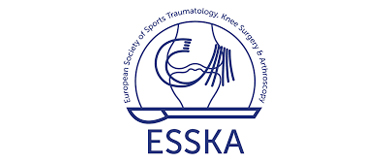
Anatomy of the Kneecap
The patella, also called the kneecap, is a small flat triangular bone located at the front of the knee joint. It is a sesamoid bone that is embedded in a tendon that connects the muscles of the thigh (quadriceps) to the shinbone (tibia).
What is Runner’s Knee?
Patellofemoral pain syndrome, also called runner’s knee, refers to pain under and around your kneecap. Patellofemoral pain is associated with a number of medical conditions such as anterior knee pain syndrome, patellofemoral malalignment, and chondromalacia patella. Patellofemoral pain is a common complaint among runners, jumpers, and other athletes such as skiers, cyclists, and soccer players; thus the common name, runner’s knee.
Causes of Runner’s Knee
Patellofemoral pain can result from poor alignment of the kneecap, complete or partial dislocation, overuse, tight or weak thigh muscles, flat feet or direct trauma to the knee. Patellofemoral pain often occurs from overuse or strained tendons, and irritation or softening of the cartilage that lines the underside of the kneecap. Pain in the knee may be referred from other parts of the body, such as the back or hip.
Symptoms of Runner’s Knee
The most common symptom includes a dull aching pain underneath the kneecap while walking up or down stairs, squatting, kneeling down, and sitting with your knees bent for a long period of time.
Pain usually occurs under or around the front of the kneecap (patella) where it attaches to the lower end of the thighbone (femur).
Diagnosis of Runner’s Knee
To diagnose patellofemoral pain, your doctor will review your symptoms, medical history, sports participation, and other activities that may aggravate your knee pain. Your doctor will perform a physical examination of your knee. Diagnostic imaging tests such as X-rays, MRIs, and CT scans, and blood tests may be ordered to determine if your pain is due to damage to the structure of the knee or because of the tissues that attach to it.
Treatment for Runner’s Knee
Treatment options include both non-surgical and surgical methods.
The first step is to avoid activities such as running and jumping, which cause pain. Non-surgical treatment consists of rest, ice, compression and elevation (RICE protocol); all assist in controlling pain and swelling. Non-steroidal anti-inflammatory medications may be prescribed to reduce pain.
Other non-surgical treatments include:
- Exercises: Your doctor may recommend an exercise program to improve the flexibility and strength of the thigh muscles. Cross-training exercises to stretch the lower extremities may also be recommended by your doctor.
- Knee taping: An adhesive tape is applied over the patella to alter the alignment and movement of the kneecap. Taping of the patella may help to reduce pain.
- Knee brace: A special brace for the knee may be recommended during sports activities, which may help reduce pain.
- Orthotics: Special shoe inserts may be prescribed for those with flat feet, which may help relieve the pain.
In some cases, you may benefit from surgery that includes arthroscopy and realignment. During arthroscopy, damaged fragments may be removed from the kneecap, Realignment involves moving the kneecap thus reducing the pressure on cartilage and supporting structures around the front of the knee.
Prevention of Runner’s Knee
You may be able to prevent runner’s knee by following the below:
- If you are overweight, you may need to control your weight to avoid overstressing your knees.
- Gradually increase the intensity of your workout.
- If you have flat feet or other foot problems, use shoe inserts.
- Avoid running on hard surfaces.
- Wear well-fitting good-quality running shoes with good shock absorption.
- Avoid running straight downhill; instead, walk down it or run in a zigzag pattern.
- Warm up for 5 minutes before starting any exercise. Stretch after exercising.












